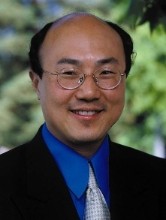Prof. Thomas Lee, Stanford University
Abstract:
History might be monotonous, but it's certainly not monotonic, common textbook presentations notwithstanding. The history of radio is no exception to this rule. Soon after the laying of the first transatlantic telegraph cable after the American Civil War, a collection of visionaries and those of dubious mental stability proposed various schemes for wireless communications. In 1872 William Henry Ward and Mahlon Loomis independently patented proposals to use the atmosphere as a conductor. A few years later, David Edward Hughes demonstrated the first portable wireless apparatus before singularly unimpressed members of the Royal Society. The patenting of wireless TDMA by Tufts University professor Amos Dolbear soon after that was greeted with a similar indifference. It took the experiments of Hertz in 1887 to stimulate wider, serious consideration of wireless communications. In short order, Bose, Popov and Lodge demonstrated necessary elements of wireless technology, and fortuitous developments by Calzecchi-Onesti, Ducretet and Branly enabled receivers with adequate sensitivity. Marconi's upscaling of these foundational technologies transformed wireless from a science project into a global business.
This talk will trace those developments, as well as the transition from Marconi's station-to-station spark-based wireless telegraphy to technologies based on the continuous wave, enabling station-to-people broadcasting, and setting the stage for Armstrong's many inventions. We'll meet Braun, de Forest, Fessenden, Alexanderson, as well as less well-known contributors such as Poulsen, Elwell and Fuller. Their contributions — spanning rotating machines, naturally-occurring semiconductors, vacuum tubes, and glowing arcs — highlight the nonlinearity and non-monotonicity of the flow of history.
